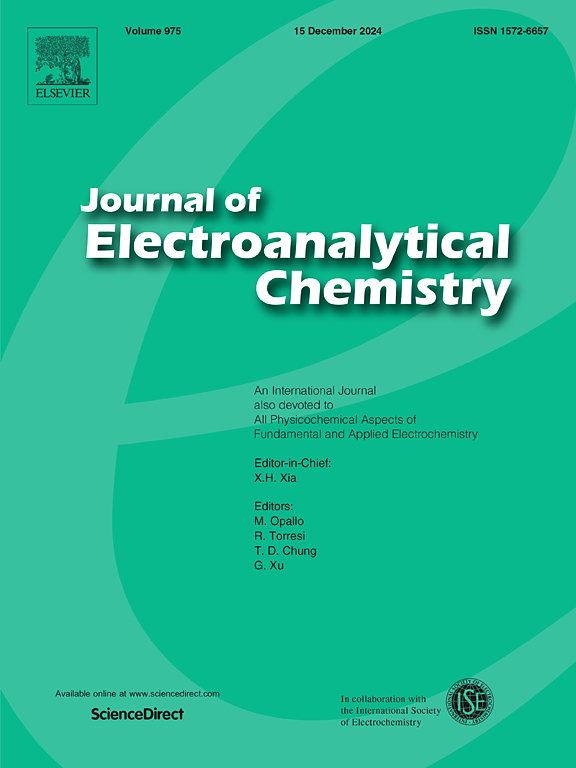B、Zr和Ti协同掺杂提高NCM811阴极电化学性能的策略
IF 4.1
3区 化学
Q1 CHEMISTRY, ANALYTICAL
引用次数: 0
摘要
元素掺杂是解决富镍三元材料结构稳定性差、容量衰减快、速率性能差等缺陷的实用方法之一。采用B、Zr和Ti三种元素,采用一步固相法对NCM811进行了改性。系统地研究了单元素掺杂的最佳烧结温度、持续时间和元素比。在初始最佳掺杂量的基础上,探讨了B、Zr和Ti三元掺杂在不同掺杂比例下对阴极晶体结构和电化学性能的协同效应。结果表明,三元素共掺杂的最佳用量仅为单元素共掺杂最佳用量的1/10。优化后的多元素掺杂样品表现出优异的倍率性能,在5C下放电容量可达到单独掺杂样品的1.64倍。协同改性的潜在机制是掺杂元素的过度积累会形成屏障,削弱锂离子扩散动力学,在多元素共改性中起重要作用的是一些竞争影响而不是完全叠加效应。因此,本文提出了多元素掺杂的特定视角,以解决富镍正极材料的不足,为商业化正极材料改性提供一定的指导。本文章由计算机程序翻译,如有差异,请以英文原文为准。

Synergistic doping strategy for enhancing the electrochemical performance of NCM811 cathodes using B, Zr, and Ti
Element doping is one of the practical methods to solve the defects of nickel-rich ternary materials with poor structure stability, fast capacity decay, and poor rate performance. Three elements of B, Zr, and Ti were applied here to modify the commercial precursor NCM811 using a one-step solid-phase method. The optimal sintering temperature, duration, and elemental ratios for the single-element doping were systematically investigated. Furthermore, the synergistic effect of ternary doping with B, Zr, and Ti on the cathode crystal structure and electrochemical performance were explored at different doping ratios based on their original optimal adding amounts. It was found that the optimized amounts of three-element co-doping were only 1/10 of their optimal ratios for single-element doping. The optimal multi-element doping sample exhibited superior rate performance, and the discharged capacity can reach 1.64 times that of their individual superimposed counterparts at 5C. The potential mechanism of the synergistic modification is that excessive accumulation of doping elements can form a barrier to weaken the kinetics of lithium-ion diffusion, and some competitive influences rather than complete superimposed effects play an important role in multi-element co-modification. Therefore, a particular perspective on multi-element doping was proposed here to address the shortcomings of nickel-rich cathode materials, providing some guidance for commercial cathode material modification.
求助全文
通过发布文献求助,成功后即可免费获取论文全文。
去求助
来源期刊
CiteScore
7.80
自引率
6.70%
发文量
912
审稿时长
2.4 months
期刊介绍:
The Journal of Electroanalytical Chemistry is the foremost international journal devoted to the interdisciplinary subject of electrochemistry in all its aspects, theoretical as well as applied.
Electrochemistry is a wide ranging area that is in a state of continuous evolution. Rather than compiling a long list of topics covered by the Journal, the editors would like to draw particular attention to the key issues of novelty, topicality and quality. Papers should present new and interesting electrochemical science in a way that is accessible to the reader. The presentation and discussion should be at a level that is consistent with the international status of the Journal. Reports describing the application of well-established techniques to problems that are essentially technical will not be accepted. Similarly, papers that report observations but fail to provide adequate interpretation will be rejected by the Editors. Papers dealing with technical electrochemistry should be submitted to other specialist journals unless the authors can show that their work provides substantially new insights into electrochemical processes.

 求助内容:
求助内容: 应助结果提醒方式:
应助结果提醒方式:


